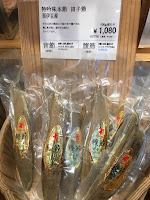 |
| Local Garbage Incineration Plant |
While Japan is well known for its mottainai ("what a waste!") green mindset, in reality environmental awareness is weak and recycling of household garbage is low (around 20% in 2016, less than half that in the UK). In terms of plastic, while 84% of all plastic waster is ostensibly recycled, the majority of this is actually burned in a process that is rather dishonestly called "thermal recycling." On the ground, some supermarkets do now give a discount for bringing your own shopping bag (my local gives ¥2 off!) this is still not widespread and the ubiquitous convenience stores, which are hugely popular, churn out a mountain of plastic packaging seemingly without any attempt to deal with the waste. Moreover, the movement to reduce one-use items like plastic straws which has swept many Western countries has not really gained traction in Japan, with restaurant operator Skylark the first (and only?) Japanese business to officially announce it will stop using them (unless customer's request them!). The government did announce in a draft strategy at the end of last year a proposal to introduce a mandatory charge for plastic bags (レジ袋有料義務化) but like much else in Japan it remains under discussion.
In everyday life, Japan has long been known for its meticulous garbage separation rules. Certainly it started this a lot earlier then the UK; I remember my wife being shocked that almost all rubbish was throw in the same bin when visiting England in the 1990s! In my local area rubbish is collected every weekday: Monday is recycle day (cans, bottles, clean plastic, batteries etc), Tuesday and Friday are for burnables (moeru gomi =燃えるごみ), Wednesday is for non-burnable (moenai gomi=燃えないごみ including dirty plastic containers), and Thursday is for paper and cardboard (as well as fabric). For over-sized rubbish (known as sodai gomi =粗大ごみ)it is necessary to buy a special sticker and then ring to arrange a pick up date. Kodaira City has a detailed website explaining how to throw out rubbish correctly (gomi no dashikata =ごみの出し方). Interestingly, non-Japanese struggling to throw out garbage in the correct way has become a source of cultural friction in some neighbourhoods and is even sometimes cited as a reason against more migration! As a result most municipalities now have brochures in various languages (English here and here).









